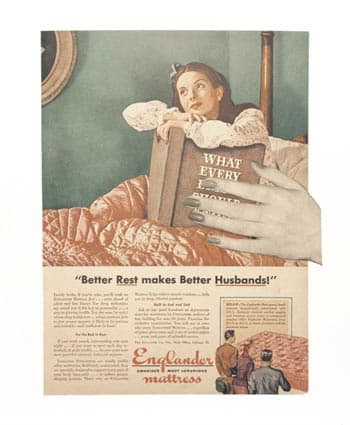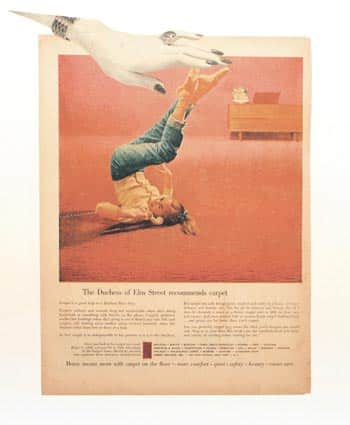by Risa Isard
It’s a Sunday night in June in 2007 and my best friends and I lie on the floor of my family room in Arizona. Tomorrow morning is the first day of cross-country summer practice.
We chatter in anticipation until 3:00 am. “Who do you think will be in the top seven? What do you know about the new girls? Let’s make a pact to work hard day-in and day-out and to pick each other up when we see someone having a bad day.”

When 5:40 a.m. rolls around, we groggily find our sports bras, running shoes, sun screen and hair ties. We rush out the door and pile into the car. Outside, it is already 90 degrees and the sun has been waiting for us for over an hour. We arrive at our school and join the rest of our team for our traditional first run. Excitement takes us out too fast and at least one teammate admits she forgot how hard running actually is. Regardless, we enjoy running the mountain trails, each other’s company and the “cool” mornings. Once school starts in August, we will endure hill repeats and three-mile races, both in 110-degree heat.
In the midst of a workout, I was not thinking about Title IX or the people who worked to secure my rights. But I knew about Title IX and I know what it’s like to climb a hill under a hot sun. So, I began to wonder not only about the implementation of the law, but also about the run-up to June 23, 1972, the day that President Richard Nixon signed it into law.
In my research, I learned about – and interviewed — Vincent Macaluso and Bernice Sandler. They, and Title IX, were part of a larger movement for women’s educational equality that began three years earlier.
In 1969, Vincent Macaluso was the assistant director of the Office for Federal Contract Compliance at the Department of Labor. He received a phone call that he cannot quite remember. But his mind is sharp when retelling what came afterward. How could he forget the way his actions changed the course of education for women in America?
Macaluso’s job included writing guidelines for federal labor laws, such as Executive Order 11375. Signed by President Johnson in 1967, this executive order added “sex” as a protected category to a rule that prohibited government contractors from discriminating based on race, religion and national origin. In an unforeseen turn of events, Executive Order 11375 became the early backbone of the movement for women’s educational equality, even though its original purpose was to protect construction workers from discriminatory hiring practices.
Stung by Sex Discrimination in Hiring
Bernice “Bunny” Sandler was on the other end of that call to Macaluso. Sandler had just received her doctorate from the University of Maryland. She applied for a faculty position there, only to be overlooked. When she approached a friend on faculty about the discrepancy, he explained why she was not considered. “You come on too strong for a woman,” he told her bluntly. Sandler’s job search continued, and so did the sex discrimination. On at least two other occasions, employers denied Sandler career opportunities because of her gender.

Sandler told me that she never believed sex discrimination existed until it happened to her. After those few months, though, not only could she could no longer deny the pervasive injustices, she was ready to lead a charge for change.
Sandler found the seemingly obscure Executive Order 11375, which she believed made sex discrimination at educational institutions illegal. Universities, after all, received millions of federal dollars each year. She and Macaluso began to work together.
Macaluso and Sandler partnered with the Women’s Equity Action League (WEAL), and, to a lesser extent, the National Organization for Women(NOW). If they wanted to be successful, Macaluso explained, they would have to “make a lot of noise.” They filed charges of sex discrimination against every university in the country, claiming a violation of the Executive Order. Equipped with an official title and organizational letterhead emblazoned with names of congressional members and judges, WEAL’s support gave Sandler authority that she never could have achieved on her own.
This movement started with Sandler, but it was never truly about her. She filed a class action in January 1970 against the University of Maryland, focused on its policies and educational climate as a whole. Following Macaluso’s instructions and their strategy to “make a big splash,” Sandler compiled an 80-page report that accompanied the charges — the size of the document alone legitimized women’s second-class experiences.
These charges caught the attention of U.S. Representative Edith Green (D.OR), a member of WEAL’s National Advisory Board. During the summer of 1970, Green, a 15-year veteran of the House as well as Chair of the Special Committee on Education, sponsored the first-ever hearings on sex discrimination in education. The hearings provided material for a (once again) deliberately lengthy 1,200-page document that supported women’s claims and suggested the country needed new legislation to protect against sex discrimination in education.
Green held her hearings partially with the intention of amending the Civil Rights Act of 1964 to include a provision against sex discrimination in education. The Civil Rights Act prohibited racial discrimination in education. It also covered sex discrimination in employment but explicitly exempted educational institutions. Ultimately, Green decided to attach her bill to the Education Amendments of 1972 for two reasons: (1) to avoid opening Pandora’s box on the Civil Rights Act, and (2) to use a more stealth strategy. Starting as Title X, it moved up to Title IX after another amendment was withdrawn.
Green had hoped to keep her bill out of the spotlight. Fearing what might happen if other members of Congress understood the full ramifications of her bill, she was happy when contentious issues like financial aid and busing overshadowed her anti-discrimination provision. Even so, advocates of the anti-sex discrimination amendment faced resistance from religious schools, elite private schools and even prestigious women’s colleges. Though members of Green’s subcommittee originally failed to pass the bill in 1970, Green found solidarity at the full committee level with Representatives Shirley Chisholm (D. NY) and Patsy Mink (D.HI) which made her second try, in 1971, successful. Mink would become one of Title IX’s most ardent defenders, prompting Congress to honor her death by renaming the provision after her.
Sports Flies Beneath the Radar
Meanwhile, in the Senate, Birch Bayh (D.IN) first introduced a similar provision in August, 1971. Like Green, his first attempt was blocked, though he eventually emerged triumphant. On two occasions, opponents briefly challenged Bayh to explain what his bill would mean for scholastic sports. These remained the only two conversations about sports and Title IX before the bill was signed into law.
Both houses of Congress then moved to a conference to rectify the differences between their versions of the Education Amendments. Once again, busing and federal aid dominated the debate. While Title IX passed through relatively untouched, Green was dissatisfied with the final federal aid and busing clauses. Additionally, the entire conference process was marred with interparty and personal politics between Green and Carl Perkins (D. KY), the only member of her committee who ranked above her. Disillusioned, Green joined the opposition and mounted an (unsuccessful) attack on the Education Amendments. In the end, she would vote against the very bill, including Title IX, that she authored and managed for over two years. The House and Senate both voted to pass the bill and Nixon signed it.
When I started doing research on Title IX, I assumed there had been a big demonstration that led to the passing of Title IX. After all, that is how social movements are taught in history classes: the Civil Rights Movement had the March on Washington; the Gay Liberation Movement had Stonewall; the feminist movement had a mythical bra-burning rally. The movement for women’s educational equality was different. As Sandler told me, sternly, “There were no marches for Title IX!” There was only an informal network of people who supplied Sandler with data for her initial letter-writing campaign and a handful of women and men who worked tirelessly to maneuver Congress.
While I became interested in Title IX because of what it provided for me in equal opportunities as an athlete, I learned that I owe it thanks for much more — securing the right for women to exercise our brains. Due to Title IX, I had the opportunity to earn eight varsity letters in high school athletics. But, more importantly, the law secured my right to earn educational distinction on an equal footing with my male counterparts.
Risa Isard graduates from Duke University in May 2012 with a self-designed degree in “Social Change at the Intersection of Culture, Gender, and Sports.” At Duke, she spent three years as a manager for the women’s basketball team and one year on the varsity rowing team. She is also the past-editor of the Blue Devils United Blog, which is sponsored by undergraduate LGBTQ and allies organization of the same name. This essay includes excerpts and research from her honors thesis, “Towards a Level Playing Field: The Forces and Faces Behind Title IX and Women’s Educational Equality, 1969-1975.”
Also see Who Owns Sports? Dissecting the Politics of Title IX by Martha Burk in this edition of On The Issues Magazine.
See Nine Titles Thinking About Title IX by Rachel Toor in this edition of On The Issues Magazine.
Read the Cafe for new and updated stories.
